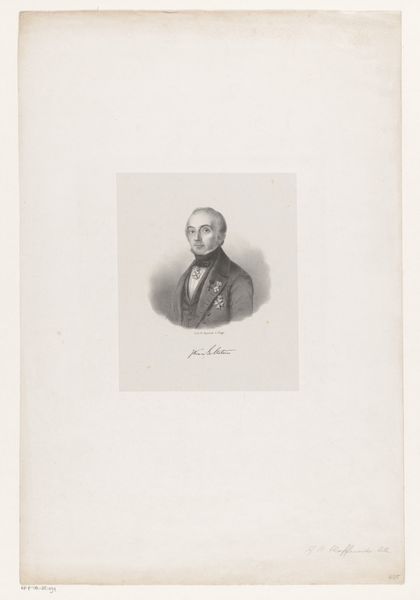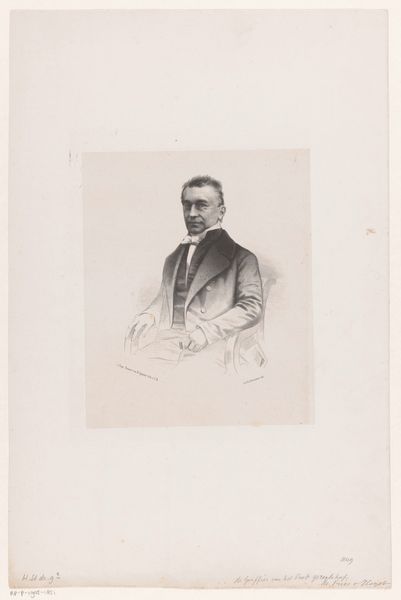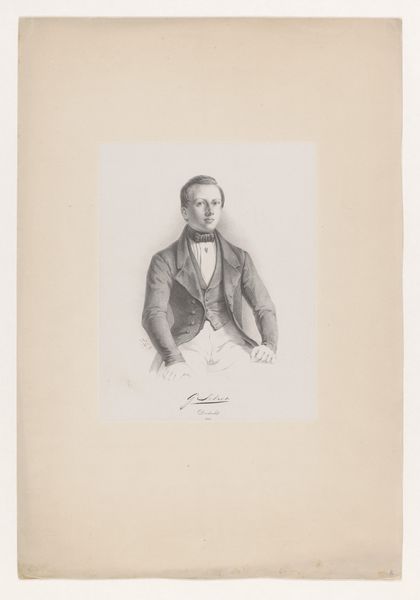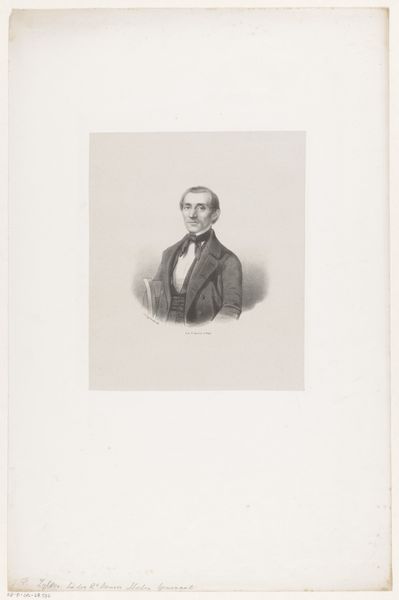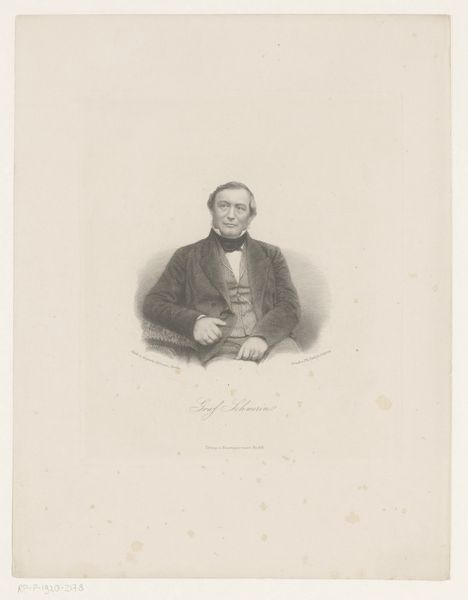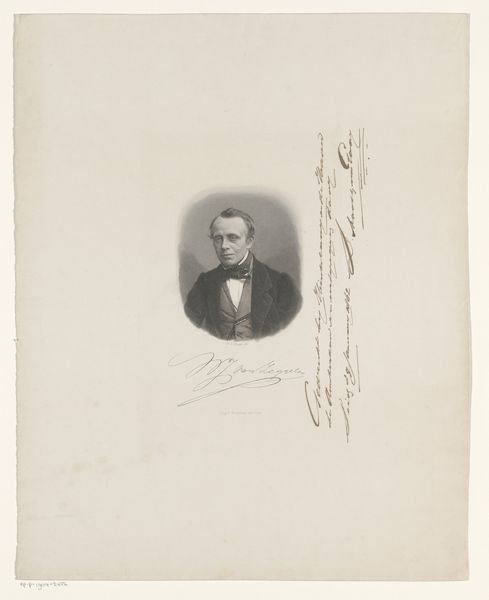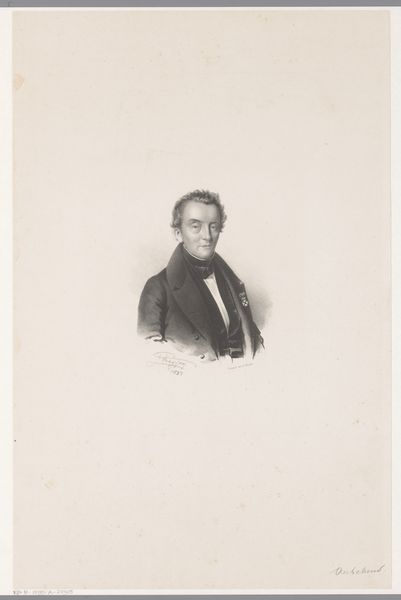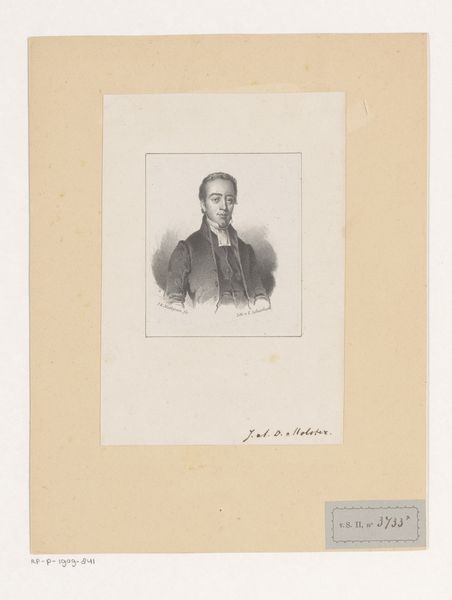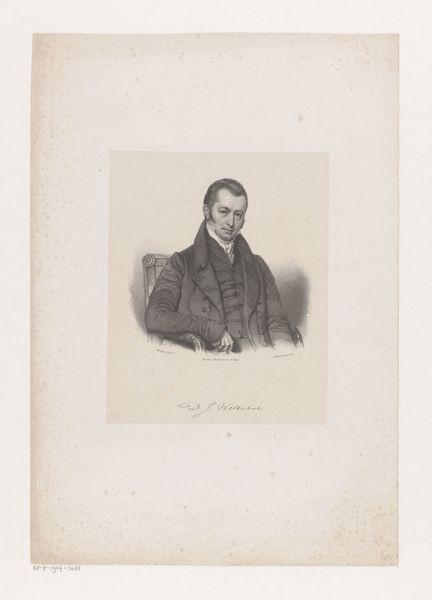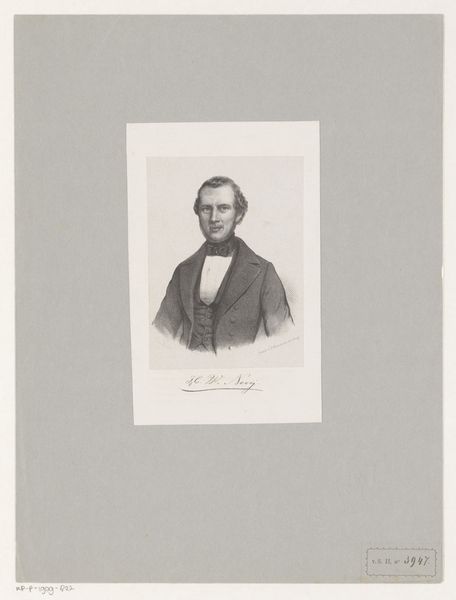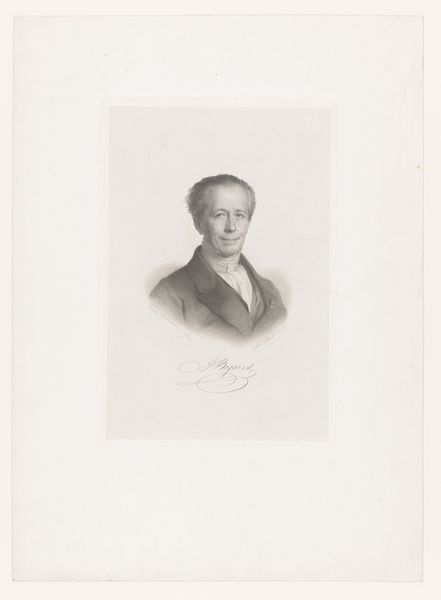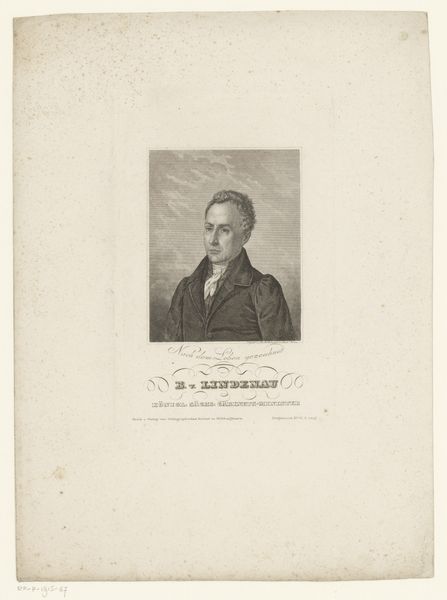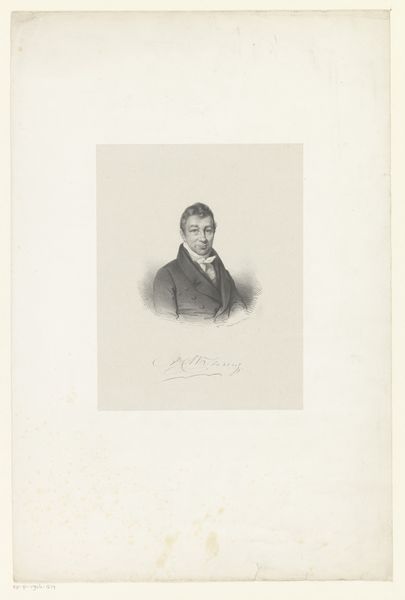
print, graphite
#
portrait
# print
#
graphite
#
academic-art
#
realism
Dimensions: height 310 mm, width 235 mm
Copyright: Rijks Museum: Open Domain
This is a portrait of George Hendrik Gideon Lagers, created by Bernardus Theodorus van Loo using lithography. Lithography, invented in the late 18th century, democratized printmaking, using the chemical repulsion of oil and water. Here, the artist likely drew the portrait on a limestone or metal plate with a greasy crayon, treating the surface so that ink would adhere only to the drawn areas. The print displays a finely textured surface achieved through careful rendering on the lithographic stone. Notice the subtle gradations of tone which give the portrait depth and character. Lithography facilitated mass production of images, making art more accessible but also potentially reducing the perceived value of hand-made art. Understanding lithography's process and social context helps us appreciate its impact on art and visual culture, and also prompts us to question hierarchies between art and craft.
Comments
No comments
Be the first to comment and join the conversation on the ultimate creative platform.
